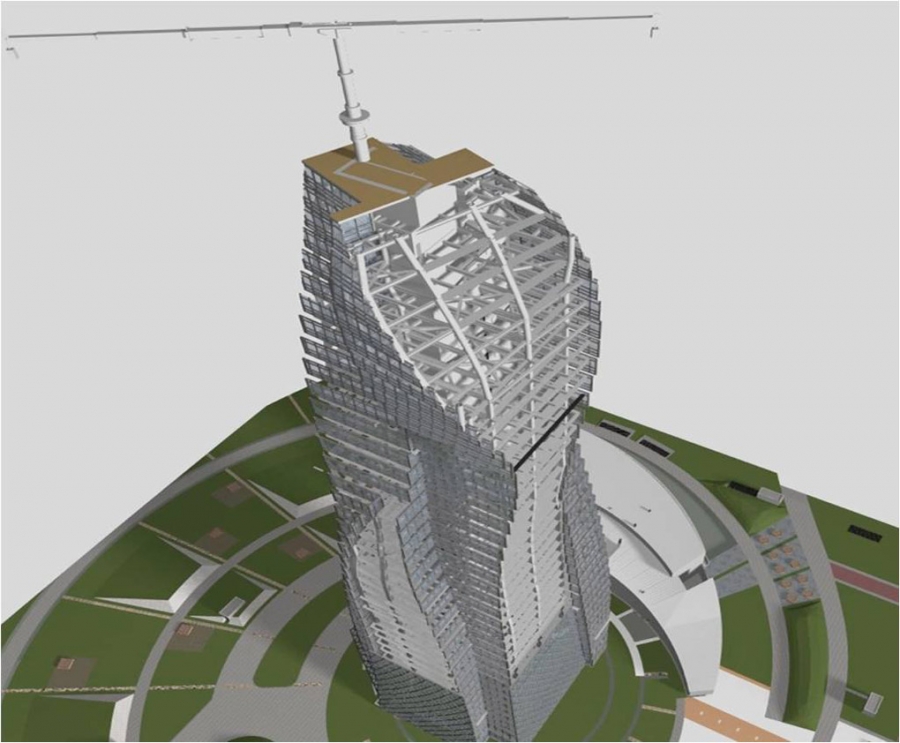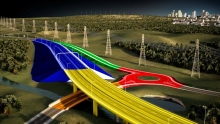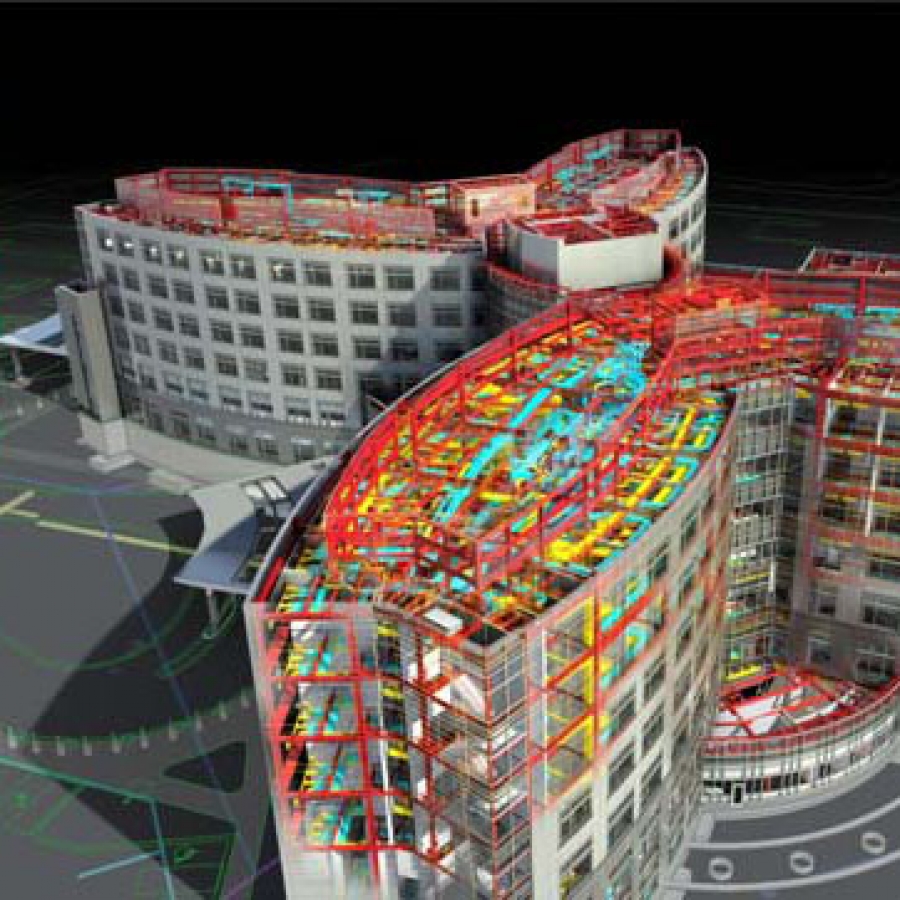BIM and Sustainable Design
Sustainable design is here to stay – an economic stronghold fully ready for BIM integration.
 Image courtesy of Bimhub
Image courtesy of Bimhub
By 2016, revenue from the green and sustainable building construction industry is expected to reach $245.4 billion, according to projections made by market research company IBISWorld in 2011. “Many types of construction projects and activities will drive demand for green building construction, as property owners, developers, and regulators increasingly emphasize environmental protection, energy conservation, and cost savings,” said Kathleen Ripley, an analyst at IBISWorld.
Sustainability of a building depends on several factors, such as energy efficiency, quality of air and water, and material selection. The environmental impact of building construction is astonishing. According to the U.S. Department of Energy’s Energy Efficiency and Renewable Energy network, the construction industry is responsible for 30% of the country’s greenhouse gas emissions and 136 million tons of construction and demolition waste. This industry also accounts for as much as 40% of the nation’s energy consumption and consumes 12% of the country’s total fresh water supplies.
Cost of Sustainability in Design
The need for sustainability in construction is urgent. In order to build a sustainable building, architects and engineers need to first develop a sustainable design. However, sustainable designs need to be justified for the various stakeholders. The two most important considerations are the environmental and the economic impacts. While sustainability is important, it has to be feasible. Sustainable design is achieved only when it has a positive impact on both of these areas.
Sustainability in design requires attention to several factors, such as civil infrastructure, site design, architectural design, and the design of the building systems. Although sustainability has implications throughout the life of a building, architects, engineers, and developers need to be sensitive of the value added by every dollar of their investment.
The use of building information modeling (BIM) technology can prove extremely useful in achieving these goals. BIM, along with the support of appropriate technology, can potentially minimize the cost of a sustainable design. This is possible because BIM enables information to be easily available for design, analysis, and certification.
Benefits of Using BIM for Sustainable Design
BIM enables architects to create a digital model or prototype before the actual construction commences. As such, the use of BIM provides several benefits when creating sustainable building design. Following are the three major advantages of using BIM for sustainable design:
-
Better Informed Decision-Making. During the process of designing a building, architects need to consider various options and have enough information to select one. BIM allows architects to create and study multiple design options within a single model. The options can be set on or off for analysis and then included or discarded according to the design decision.
-
Better Analysis. Powered by high-resolution graphics, qualified details, and a 3D modeling interface, BIM helps create an accurate virtual model of a sustainable building project. This model can be very useful for making different kinds of analysis, such as quantity takeoffs and clash detection. Because it is quick, easy, and cost-effective to create a 3D model using BIM, architects often create multiple alternatives and compare those in order to select the most suitable sustainable design for a construction project. Simply put, the effective use of BIM enables designers and architects to analyze how sustainable a building would be, even before the actual construction commences.
-
Easier Access to Information. Using a BIM-based design model ensures that architects and designers get easy access to the information required for creating a sustainable design. The BIM model uses sophisticated software tools, which enables quick information processing and easy revisions. With BIM, one can easily assess the amount of building material required to complete a project or access any other necessary information.
-
Simpler Certification. A model based on BIM includes all the information necessary for various aspects of a sustainable design. It allows the creation of details, which can improve the accuracy of green certification. The model also allows automatic tracking of building materials and their quantities, which in turn can indicate how much of the material is for reuse or recycling.
Moreover, the use of BIM helps to establish a single point of contact for different participants in a project. This may be very useful when it comes to executing a sustainable design effectively. According to a report by McGraw-Hill Construction, the size of the U.S. green building market may reach $135 billion by 2015. Now is perhaps the best time to adopt BIM for designing and implementing sustainable construction projects.


Jonas N. Salih
Jonas N. Salih is an entrepreneur with broad experience in all aspects of serving as an incubator (for start-ups), a business developer, and a business manager. He is passionate about partnering closely with AEC firms and helping them experience success with BIM implementation.
Website: www.bimhub.com







